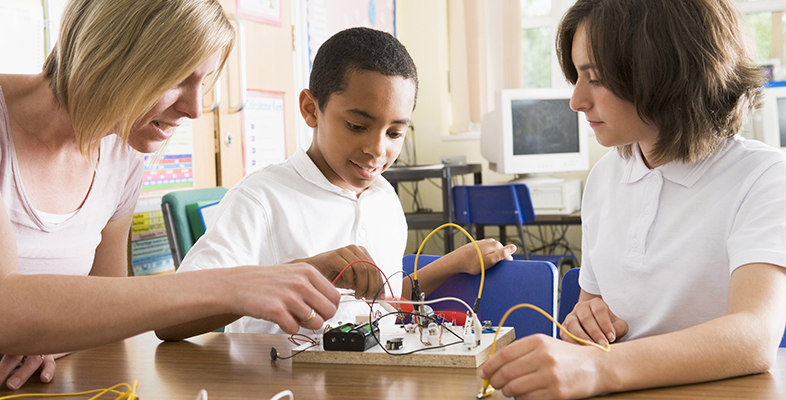3.2 Using critical incidents
Common incidents in the science classroom can provide good opportunities for engaging students with the nature of science. Critical incidents as defined by Nott & Wellington (2002) and Wellington & Ireson (2012) include those that arise during practical work and confront teachers with decisions about a course of action. They focus on some examples of the incidents that experienced teachers will be familiar with, including:
- students not drawing what you expect when looking at cells under a microscope
- Canadian pondweed not producing sufficient oxygen for testing
- lamps in series circuits not being of the same brightness
- burning magnesium ribbon giving different results, with some finding a loss in weight and others a gain or no difference.
These examples confront teachers with how to handle unexpected results. Another common critical incident occurs when students deny the evidence they collect when it clashes with their current conceptual understanding. For example, if students investigating the factors affecting the time period of a swinging pendulum believe it is the mass of the weight that determines the time period, they may disregard the evidence that disproves this and simply believe they did the experiment wrongly.
Reflection point
How would you respond to the incidents given above? How might a teacher more focused on supporting students’ understanding of the nature of science respond to these incidents?
Common approaches to the unexpected results include ‘doctoring’ or ‘rigging’ the practical (for example, adding oxygen to the test tube with the pondweed), explaining away the results (‘The bulbs aren’t identical!’), or blaming inaccurate measuring. These types of responses suggest that the teacher is focused on ensuring that the students get the ‘right’ results and, therefore, the ‘right’ science knowledge. Yet these incidents provide an opportunity to engage students in a dialogue about the nature of science and practical work. There is no right way to deal with the incidents described above, but here are some suggestions:
- Cells under a microscope: Ask the students to compare what they see to photographs of cells, after checking that they have not focused on bubbles.
- Canadian pondweed: Discuss why so little gas was produced and how to increase it.
- Lamps in series circuits: Try different bulbs to see whether an issue with the bulb is affecting the results.
- Burning magnesium ribbon: Discuss why results might be so varied and what scientists would do.
- Pendulum period results: Discuss why the students don’t believe the evidence and how they could verify it.
By sharing and comparing results, practical work can reflect the collaborative nature of science. Repeating the work of others reflects the ‘reproducibility’ aspect of science and critiquing the work of others, the peer-review process.
